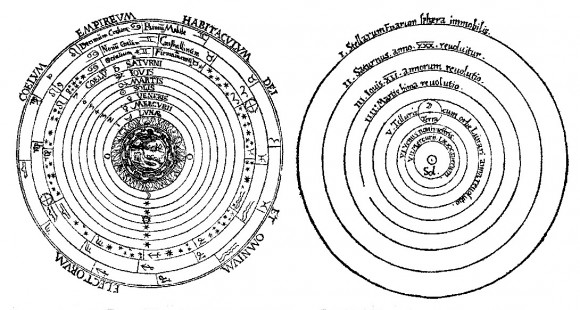A Sumerian Heliocentric Universe July 21, 2016
Author: Beach Combing | in : Ancient , trackback
Beach got this email from ANL, an old friend of the blog, a couple of months back and he wondered whether any enthusiast, astronomer or logician can help: drbeachcombing AT yahoo DOT com
Something about circles has been bothering me for some time, and I was wondering whether you or one of your readers can cast any light upon it. We divide a circle into 360 degrees, a 5,000-year-old method that we have inherited from the Mesopotamian civilizations, and which goes back as far as the Sumerians, whose idealized 360-day calendar was divided into twelve 30-day months. But why should this calendar be represented as a circle? A search on the internet yielded the idea that the Sumerians ‘noticed the circular track of the Sun’s annual path across the sky and knew that it took about 360 days to complete one year’s circuit’. But the Sun’s path across the sky is NOT circular; its apparent path oscillates backwards and forwards from north in summer to south in winter. So how can this explain the 360-degree circle? The point is that the 360 degrees of a circle represent an idealized year of 360 days, but the model is very obviously heliocentric, not geocentric. The centre of the circle represents the (idealized) position of the sun, and the 360-degree edge of the circle represents the orbit of the Earth. Now, is it conceivable that the Babylonians could have come up with the idea of a heliocentric ‘universe’ 5,000 years ago? If there is any other explanation, I just can’t see it.
If someone put a gun to Beach’s head he would nervously suggest that the year is a circle: the endless traipse of spring, summer, autumn… and so the 360 were jammed into that ‘box’? Also, Sumerian and Babylonian representations of the universe were circular (why?). Historians of science state confidently that a heliocentric theory was not established until the early centuries, BC, but how good is our knowledge of the competing and even mainstream astronomical ideas from the fertile crescent?
Gary V, 31 Jul 2016: The place to start looking is Otto Neugebaur, The Exact Sciences in Antiquity. I remember that he explains the origin of 360 degrees. (Unfortunately my copy is in storage so I can’t give you an exact reference.) Sumerian astronomy recorded events over a long period and used these records to derive patterns that could be used for predictions of future astronomical events. There is no evidence that these patterns were attributed to any sort of model of the universe, heliocentric or otherwise.
Bruce T, 31 Jul 2016: The Sumerians saw the world as a flattened sphere of concentric circles, they merely expanded it to include the sky above. Any mammoth hunter worth his salt would’ve picked up on a rough 360 day calendar based on both the cycles of the moon and the time between the longest or shortest days of the year. This cycle would have become much more precise in the Neolithic as tracking planets and constellations became intertwined with planting, harvesting, the birth of domestic animals and the best times to slaughter them. I still know people who plant crops and cut lumber by the signs. This practice likely goes back to the dawn of agriculture. There is some speculation that the Babylonians had conceived of heliocentric cosmos based on some Greek references, but we’re still dealing with the first millennium B.C.E. two thousand years after the Sumerians went the way of the dinosaurs. They kept the Sumerian model as tradition, likely as part of a religious calendar as they shared many of the same gods and belief systems. However, Babylonian astronomy/astrology, essentially the same art at the time, had moved well beyond the level of the Sumerians.


